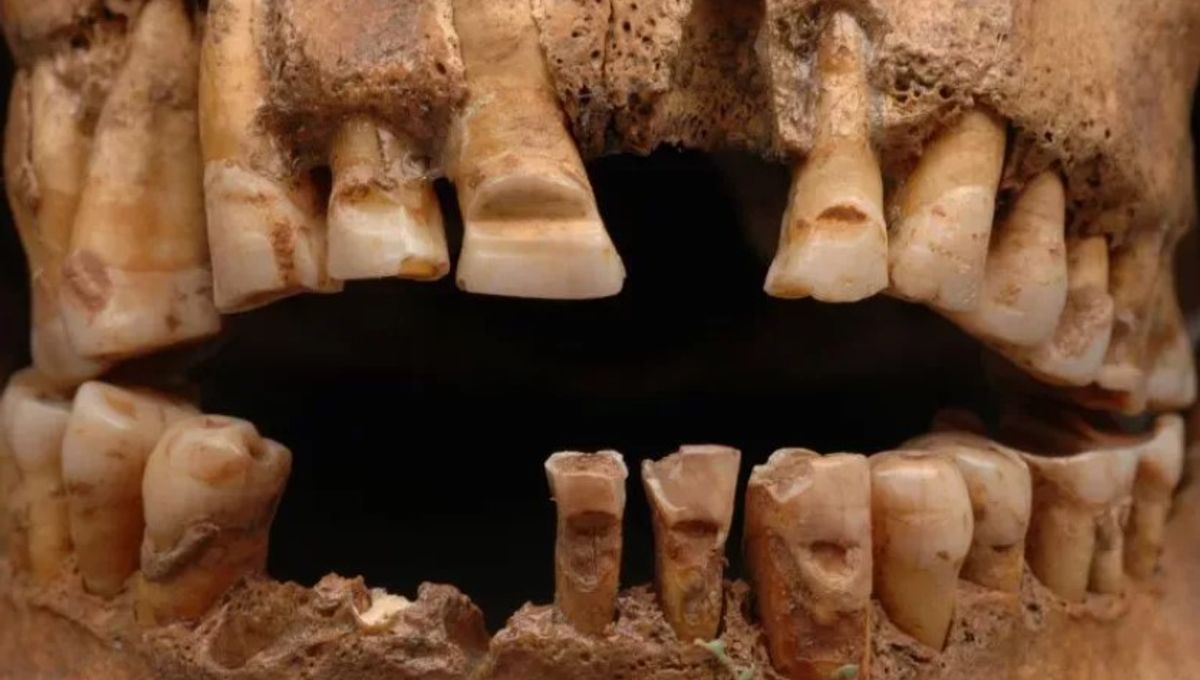
In the age of the Vikings, there may have been one surefire way to tell if a man was part of a merchant guild: by looking at his teeth. According to a new analysis of intentional body modifications among Viking skeletons, males who entered into the trading profession may have undergone a curious rite of initiation whereby their chompers were marked with horizontal grooves, thus signaling their membership to a kind of professional fraternity.
The study authors identified a total of 130 skeletons from around Scandinavia sporting these odd furrows in their teeth. While it’s impossible to say with any certainty exactly what this signified, the researchers point out that the notched gnashers only appear on “male-gendered individuals”, with the vast majority of cases coming from important trading sites on the island of Gotland, off the east coast of Sweden.
For instance, at Gotland’s Viking-Age Kopparsvik cemetery, almost all skeletons with modified teeth were found in an area of the graveyard that was possibly reserved for non-local individuals, such as visiting traders. The study authors “therefore theorize that the custom of tooth filing might have been linked to trading activities of larger groups of professional merchants.”
“According to this theory, they might have functioned as a rite of initiation and sign of identification for a closed group of merchants, as some kind of precursor to the later guilds,” they write.
Exactly how these early Viking trade unions functioned is unclear, but the researchers suggest that flashing a set of modified teeth may have entitled members to certain “commercial advantages, protection or other privileges.” Interestingly, all of the skeletons identified by the authors predate the late Viking Age, by which time these trading communities appear to have become more established in Scandinavia, as evidenced by rune stones that explicitly mention “guild brothers”.
Even more intriguing, some of those with filled teeth are buried in ways that suggest they were ritually killed, and could therefore have been slaves or convicts. This indicates that membership to an exclusive merchant brotherhood was not permanent and that even those who had undergone the initiation could still suffer a “dramatic change in their social identity,” even ending up in servitude.
In addition to these ridged-toothed men, the study authors also identified the remains of three women whose skulls appear to have been intentionally deformed during infancy. Also located on Gotland, this trio pose quite a conundrum, since the practice of cranial modification is completely unheard of in the Viking world.
The researchers therefore question whether the women were foreigners who had come to live on the island with their male merchant relatives, or possibly the daughters of successful Viking traders who were born in far-flung locations where skull alteration was practiced as a means of signifying elite status.
Ultimately, it’s impossible to say who these women were or why they had their heads deformed, although the fact that they were buried in Viking clothing with lavish jewelry suggests that they were welcomed into Gotland society.
The study has been published in the journal Current Swedish Archaeology.
Source Link: Vikings May Have Modified Their Teeth As A Kind Of Initiation